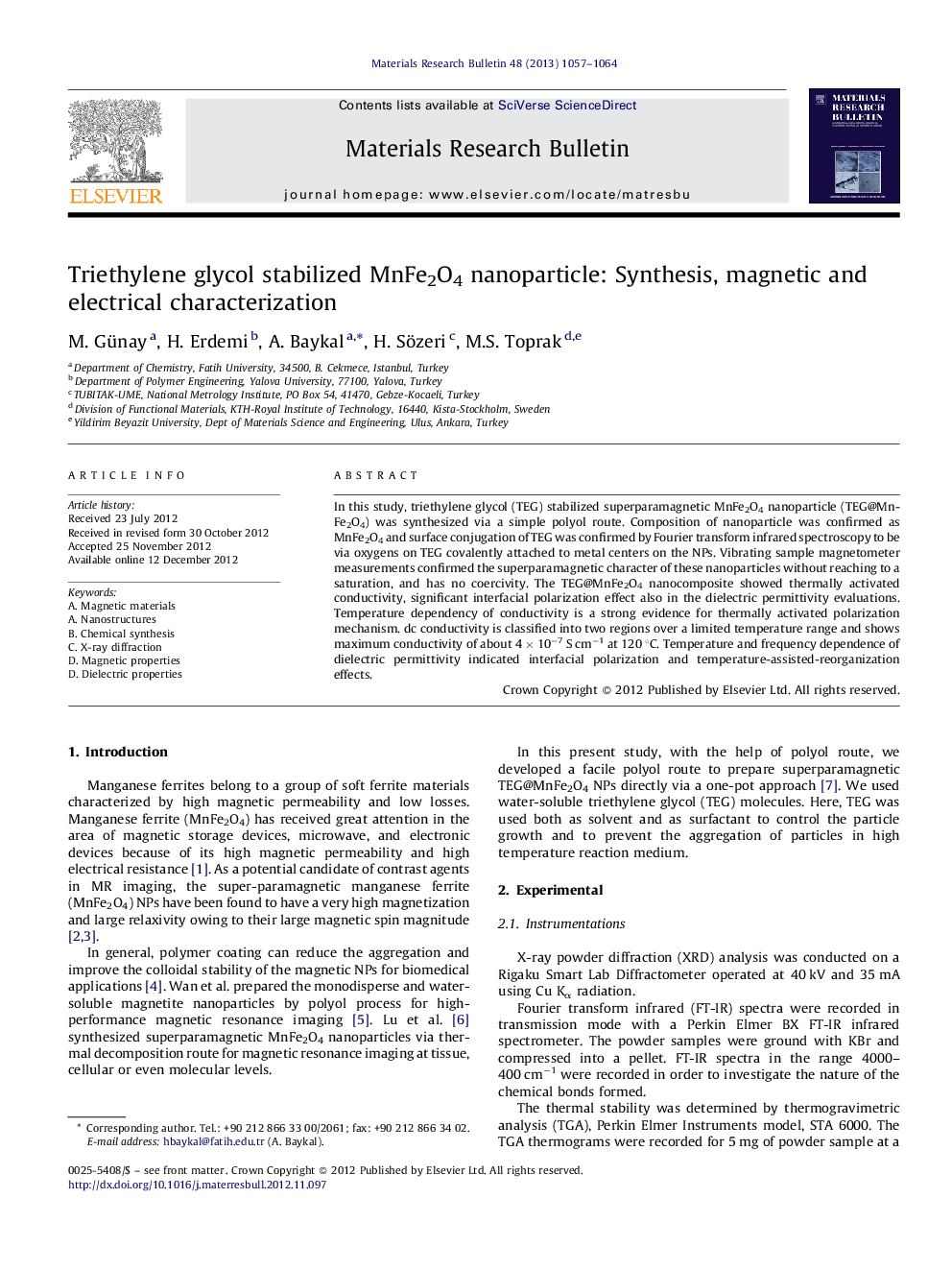| Article ID | Journal | Published Year | Pages | File Type |
|---|---|---|---|---|
| 1489494 | Materials Research Bulletin | 2013 | 8 Pages |
In this study, triethylene glycol (TEG) stabilized superparamagnetic MnFe2O4 nanoparticle (TEG@MnFe2O4) was synthesized via a simple polyol route. Composition of nanoparticle was confirmed as MnFe2O4 and surface conjugation of TEG was confirmed by Fourier transform infrared spectroscopy to be via oxygens on TEG covalently attached to metal centers on the NPs. Vibrating sample magnetometer measurements confirmed the superparamagnetic character of these nanoparticles without reaching to a saturation, and has no coercivity. The TEG@MnFe2O4 nanocomposite showed thermally activated conductivity, significant interfacial polarization effect also in the dielectric permittivity evaluations. Temperature dependency of conductivity is a strong evidence for thermally activated polarization mechanism. dc conductivity is classified into two regions over a limited temperature range and shows maximum conductivity of about 4 × 10−7 S cm−1 at 120 °C. Temperature and frequency dependence of dielectric permittivity indicated interfacial polarization and temperature-assisted-reorganization effects.
Graphical abstractFigure optionsDownload full-size imageDownload as PowerPoint slideHighlights► TEG@MnFe2O4 nanocomposite was synthesized via a simple polyol route. ► Triethylene glycol can serve as a stabilizer to control the particle growth. ► VSM confirmed the superparamagnetic character of these nanoparticles. ► TEG@MnFe2O4 nanocomposite showed thermally activated conductivity.
